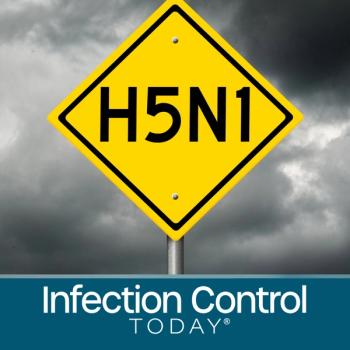
Medical Center Integrates UV Germicidal Technology as Part of Grant to Eradicate Infections
Chesapeake Regional Medical Center rolled out the newest member of its environmental team last week, a five-foot, automated disinfection robot named Tru-D (Total Room Ultraviolet Disinfection). Implementation of the mobile, high-tech disinfection device is part of a $2 million CDC grant awarded to Duke University for the prevention of healthcare-associated infections (HAIs). Â
CDC funding and technology selection was highly competitive. Chesapeake Regional was one of only nine facilities chosen by Duke Infection Control Outreach Network (DICON) to implement Tru-D disinfection. And, "we selected Tru-D because its automated system is proven to significantly reduce environmental pathogens and eliminate human error in the disinfection process," stated DICON Medical Director Daniel Sexton, MD.
U.S. Department of Health and Human Services data reveals that 1 in 20 inpatients will fight an infection that is associated with their hospital care, contributing to almost 100,000 fatalities annually. Government estimates peg annual costs for preventable infections at $33 billion, increasing hospital costs in an already tight marketplace. Contributing to escalating costs, Medicare and Medicaid no longer reimburse for many types of infections, leaving hospitals to foot the bill. Integrating advanced technology like Tru-D SmartUVC into daily cleaning protocols "would be worth it, to prevent infection," stated Dr. Billy Richmond, Chesapeake Regional's director of infection control.
Clinical studies that link environmental surface contamination to patient infection have resulted in strenuous hand washing requirements for healthcare workers. But according to Richmond, "It is not enough ... as we approach 100 percent compliance with handwashing, we still have infections." So, the focus now is to target contaminated, high-touch surfaces in a patient's room. "Even if you have 100 percent hand-washing, if you go into a room and touch a contaminated surface, then you contaminate your hand," Richmond says.Â
Research indicates that three specific disinfection technologies - accurately dosed ultraviolet light treatment, bleach, and quaternary ammonium - all show a significant reduction of environmental biological contamination. Through this CDC-funded study, researchers will document HAI-reduction specific to each technology, and determine if a combination of these technologies might do a better job killing the infectious pathogens that cause healthcare associated infections, or HAIs. Â
Fortunately, infections are rare at Chesapeake Regional, with 72 HAI's and no fatalities reported out of 15,604 admissions over the last twelve months. Even so, chief medical officer Dr. Cynthia Romero said she hopes these technologies help further reduce rates. "We don't want patients to get sicker," says Romero. "We don't want them to stay longer and have worse outcomes. We want them to go home once their treatment is complete and to stay home, enjoy, and continue to heal."
The Tru-D used by Chesapeake Regional emits a narrow-band of specifically dosed UV germicidal light to kill the environmental pathogens that commonly cause infections acquired at hospitals. Tru-D SmartUVC is the only portable UV disinfection system that precisely measures reflected UVC emissions with Sensor360 technology to automatically calculate the pathogen-lethal UV dose required for each room, dynamically compensating for room size, shape and other dose altering variables such as the position of contents, windows, blinds and doors.
Â
Newsletter
Stay prepared and protected with Infection Control Today's newsletter, delivering essential updates, best practices, and expert insights for infection preventionists.




